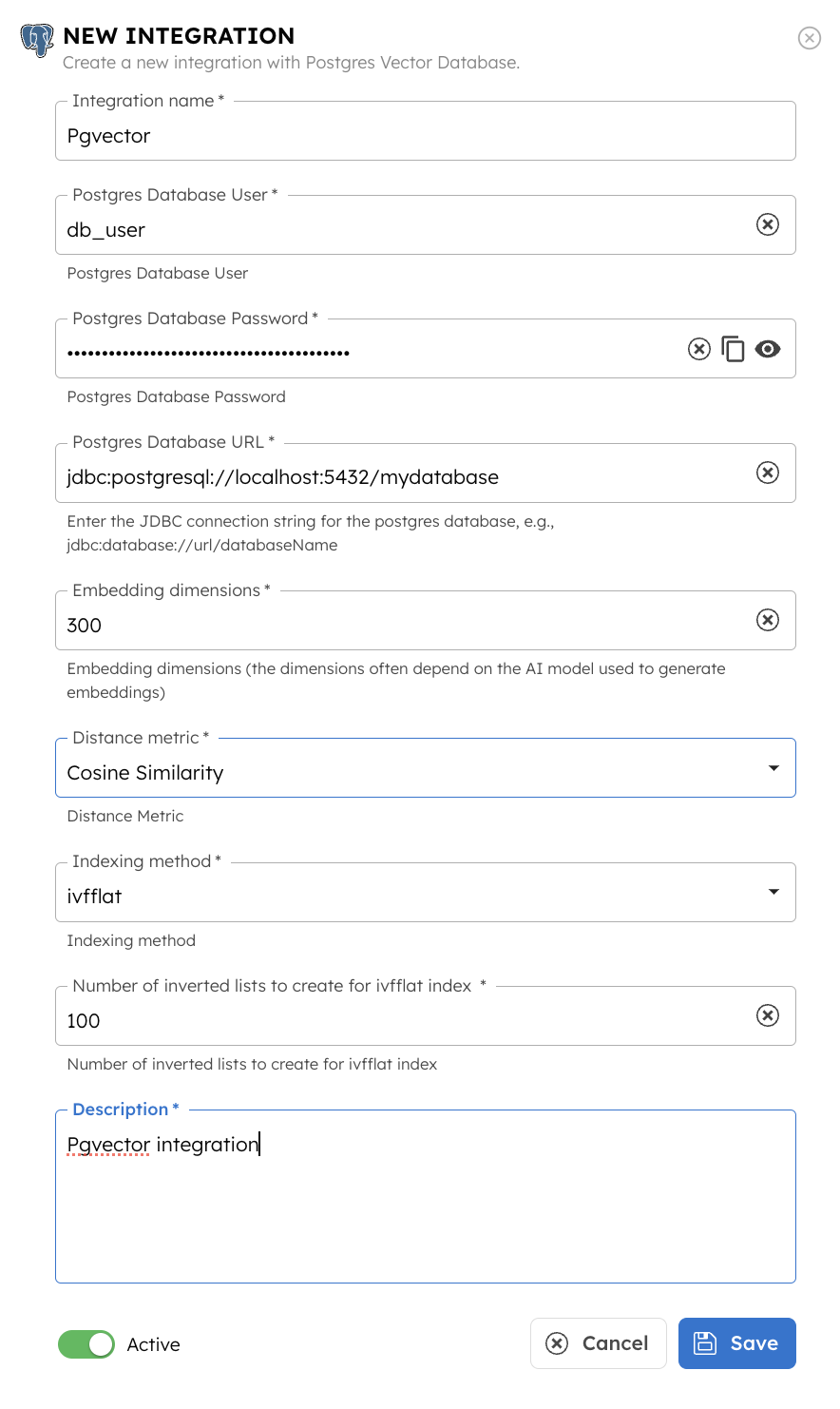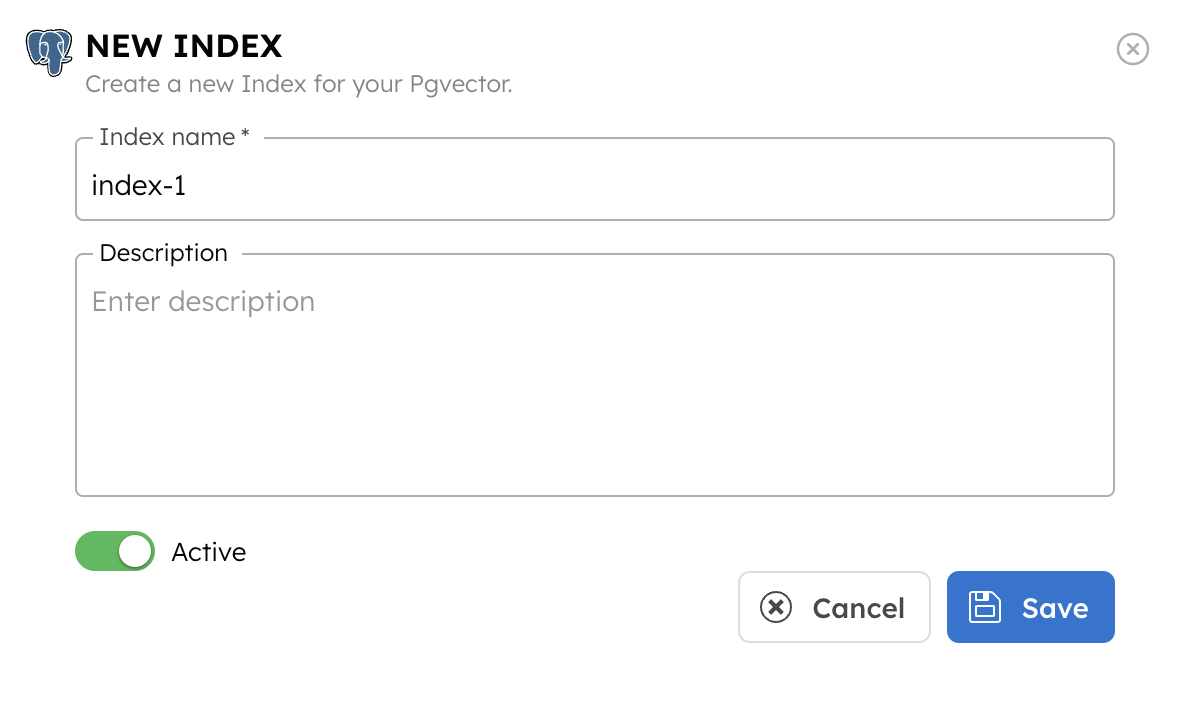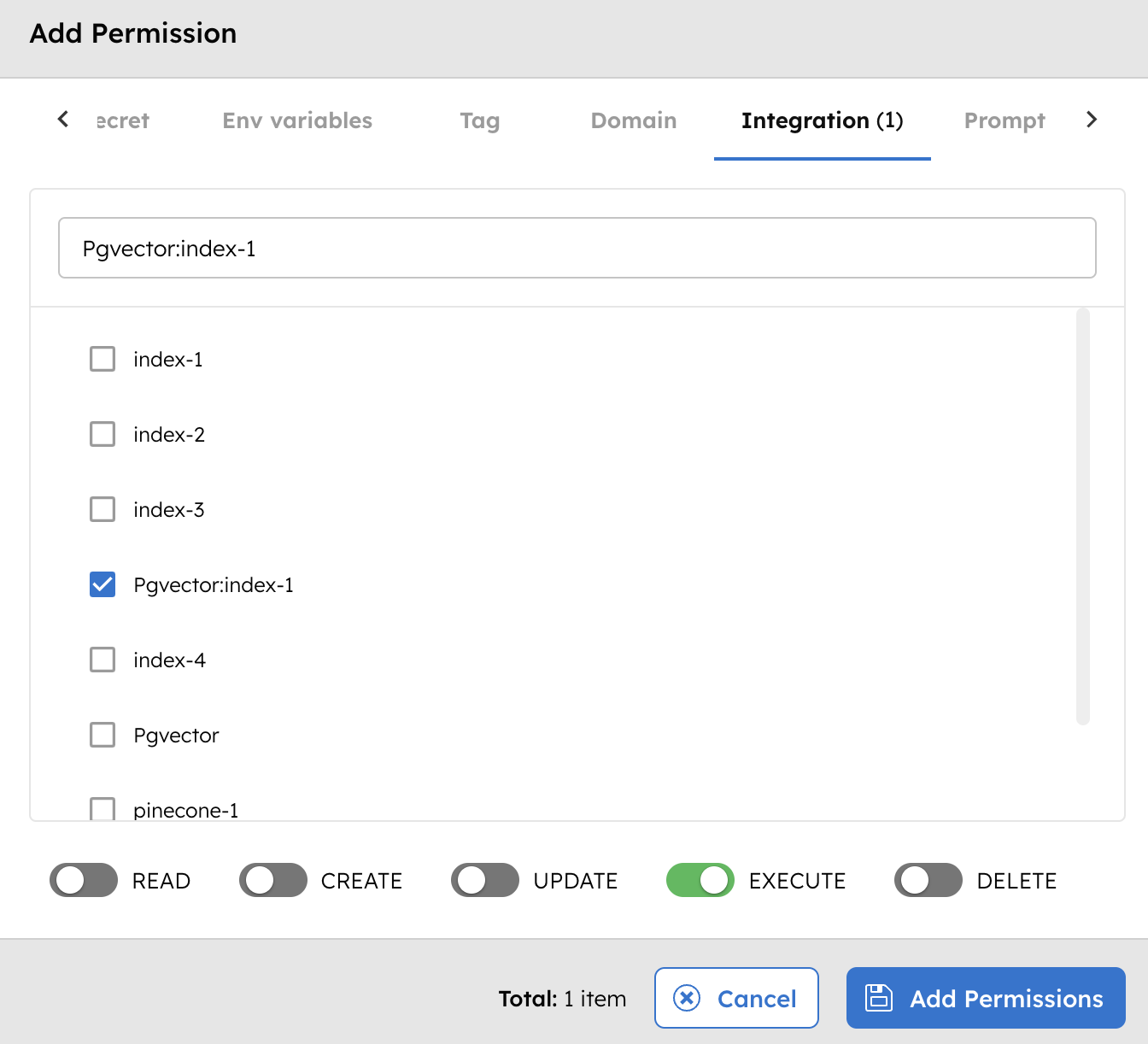Postgres Vector Database Integration with Orkes Conductor
To use LLM embedding tasks in Orkes Conductor, you must integrate your Conductor cluster with the necessary vector database providers. This guide explains how to integrate Postgres Vector Database (pgvector) with Orkes Conductor. Here’s an overview:
- Get the required credentials from pgvector.
- Configure a new Postgres Vector Database integration in Orkes Conductor.
- Add indexes to the integration.
- Set access limits to the vector database to govern which applications or groups can use it.
Step 1: Get the pgvector credentials
Set up pgvector and retrieve the following database credentials:
- Database username
- Password
- Database URL
Step 2: Add an integration for Postgres Vector Database
After obtaining the credentials, add a Postgres Vector Database integration to your Conductor cluster.
To create a Postgres Vector Database integration:
- Go to Integrations from the left navigation menu on your Conductor cluster.
- Select + New integration.
- In the Vector Databases section, choose Postgres Vector Database.
- Select + Add and enter the following parameters:
| Parameters | Description |
|---|---|
| Integration name | A name for the integration. |
| Postgres Database User | The database username. |
| Postgres Database Password | The password associated with the database username. |
| Postgres Database URL | The database URL, which is the JDBC connection string for the postgres database. |
| Embedding dimensions | The number of dimensions in the embeddings. The embedding dimensions often depend on the AI model used to generate the embeddings. |
| Distance metric | The distance metric, which is a metric to measure the similarity or distance between vectors. Supported values:
|
| Indexing method | The indexing method. Supported methods:
|
| Number of inverted lists to create for ivfflat index | If ivfflat is selected as the indexing method, enter the number of inverted lists to create when using this indexing method. |
| Description | A description of the integration. |

- (Optional) Toggle the Active button off if you don’t want to activate the integration instantly.
- Select Save.
Step 3: Add Postgres Vector Database indexes
Once you’ve integrated Postgres Vector Database, the next step is to configure specific indexes.
To add an index to the integration:
- Go to Integrations and select the + button next to the integration created.

- Select + New Index.
- Enter the Index name and a Description.

- (Optional) Toggle the Active button off if you don’t want to activate the index instantly.
- Select Save.
This saves the index for future use in AI tasks within Orkes Conductor.
Step 4: Set access limits to integration
Once the integration is configured, set access controls to manage which applications or groups can use the databases.
To provide access to an application or group:
- Go to Access Control > Applications or Groups from the left navigation menu on your Conductor cluster.
- Create a new group/application or select an existing one.
- In the Permissions section, select + Add Permission.
- In the Integration tab, select the required vector database providers and toggle the necessary permissions.
- Select Add Permissions.

The group or application can now access the vector database according to the configured permissions. With the integration in place, you can now create workflows using AI/LLM tasks.
To store data in a vector database, an embedding is to be generated by an AI model. You must also integrate an AI model provider of your choice to use this integration in workflows.